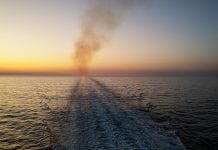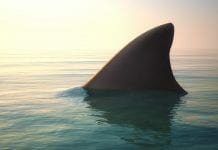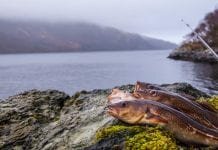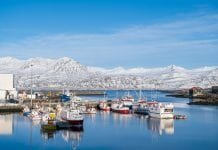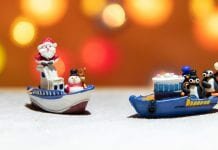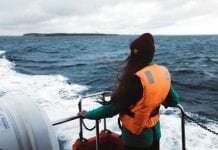
A modulated rotating biological contactor aims to achieve a recirculating aquaculture system’s maximum potential.
In recirculating aquaculture systems (RAS), a necessary component is the biological filter. These devices enable the conversion of soluble wastes to solids through bacterial growth (such as the nitrogenous wastes associated with ammonia and urea). These materials are toxic to aquatic animals until they are oxidised to nitrate by the various species of chemoautotrophic bacteria, known collectively as nitrifiers. Heterotrophic bacteria (consumers of organic material) also occupy the filter. Since these organisms grow upwards of 10 times as fast as the nitifiers, the filter must have sufficient space to accommodate all microorganisms to assure sufficient nitrification is provided.
All biological filter designs used in aquaculture are based in principle on designs originating in the wastewater industry. In wastewater, large equipment can be designed to ensure that solid wastes are captured and properly processed before removal from the discharge water. The process is energy consumptive and the expense is covered by the municipality.
These expenses must be limited in aquaculture since the cost of production must be passed on to the consumer. Moreover, there are frequent areas within the wastewater process where the water is allowed (deliberately or otherwise) to become anoxic or anaerobic. These are unacceptable conditions in RAS facilities because the bacteria inhabiting these conditions generate materials that cause noxious flavours in the fish.
Biological filters in aquaculture
A large variety of biological filters can be used in aquaculture. All designs strive to provide a large surface area for the bacteria to colonise. Typically, these filters have a stationary (fixed) bed or a moving bed of material. The kinds of materials used (such as wood or sand) all reflect the designer’s intent to confine the materials (and the water being treated) in a space that will not demand a large footprint in the production facility. They will be mostly self-cleaning, will not cause the loss of large volumes of water in the cleaning process and will not consume large amounts of energy or labour to operate. A 1985 comparative study of three types of lab-scale sized biological filters suggested that a rotating biological contactor (RBC) would provide ease of operation and consistent performance for the aquaculture industry.
One of the oldest concepts is a trickling filter. As aquaculture facilities become larger, the size of trickling filters becomes an issue. As the number of fish – and the corresponding amount of food provided – increases, a larger footprint can be required by the filter. However, the degree to which the water is treated does not increase. The only way to improve the performance of a trickling filter is to make it taller; requiring taller buildings and greater pumping expense to lift the water to the top of the filter. As the filter becomes taller, it allows the bacteria to specialise; with each group feeding on the wastes of the bacteria directly above it. A stationary/fixed medium can be suspended in the water column with the water passing upward or trickling (downward) over the medium. This allows the bacteria laden matrix (floc) to collect on the medium. This is then removed and requires the wasting of water to flush away the solids.
Filter types of the moving bed concept use a wide variety of material as medium; from a uniformly graded sand to plastic pieces of various shape and sizes. The buoyancy, weight and size of the various materials dictate the design of the system required to contain the medium and to keep it in motion. A given amount of medium surface area is required for the colonisation of the nitrifying bacteria; based on the amount and makeup of the feed required for the livestock.
The smaller the physical size of the medium, the smaller the footprint of the processing equipment. The system will agitate the medium to generate a self-cleaning process and keep the medium from settling. This can be energy consumptive and require specialised mechanical filtration afterwards to collect the very fine material generated by this agitation. This process can destroy the matrix of material keeping the bacteria collected in a floc; freeing the bacteria and matrix particles into the water too fine to be captured by physical filtration. These materials have been thought to be an irritant and can promote gill disease. Recent studies have not proven this to be accurate.
The rotating biological contactor in different environments
However, the improvements in performance provided by the rotating biological contactor over the trickling filter remain desirable. For example, imagine a tall trickling filter placed on its side in a trough, and the medium on a central shaft and turned at a slow revolution per minute (rpm). The contact time that the water has with the medium in a trickling filter is short (measured in seconds) and is regulated by the filter height and flow rate.
The same flow rate through the length of the trough takes much longer if the amount of medium on the shaft is equivalent to the amount of medium in the trickling filter (measured in minutes). As the shaft is rotated, all of the medium surface area is constantly wet. As the shaft rotates, the water rushes into and out of the medium, providing constant flushing of excess bacterial growth, aeration and CO2 stripping. This can be provided in the trickling filter by forced ventilation in a counter flow direction (additional energy cost). However, even trickling filters can become locally blocked by an accumulation of bio-growth. Due to the water movement throughout its medium, the rotating biological contactor is self-cleaning; eliminating labour and water loss associated with the filter cleaning process.
We developed a rotating biological contactor specifically for the intermediate sized RAS facility; bridging the gap between the start-up farm and a full blown commercial operation. Making the RBC modular allows the filter to be designed to fit the application. All parts were developed from stainless steel or plastic to allow the filter to be utilised in all conditions (e.g. fresh water and full strength saltwater). We selected a medium diameter of 1.8m (6ft) and a trough diameter of 2.1m (7ft). We developed the prototype RBC to replace one of the grow-out trickling filters and test it against an operating twin with medium stacked 1.8m (6ft) x 3.7m (12ft) x 4.9m (16ft). Both systems were operated at a flow rate of 1.7m3/min (450g/min). Medium from the removed trickling filter was shaped and used in the RBC to speed up the conditioning process. Additional medium was added to match the volume of the trickling filter. Contact time as the water passed through the trickling filter was approximately 30 seconds (a path of 1.8m). Contact time in the RBC was approximately 30 minutes (a path of 20m; 72ft). There were 12 stages consisting of a 1.8m (6ft) shaft with 1.2 linear meters (4ft) of medium per stage.
The staging of the water flow provided an opportunity for the bacteria to specialise in processing the waste from the preceding stage. Each stage bulkhead provided a block bearing where the individual shafts were linearly interconnected and provided support and stress relief for the shaft assembly. The medium was mounted centrally in the trough with a free board between the medium and the trough of 15.2cm (6in) and a submerged depth of approximately 35% of the diameter. The water quality in the RBC exceeded that of the trickling filter before reaching a distance of 11m (36ft) because of the extended contact time compared to the trickling filter. Also, all of the medium surface was wetted and not plugged by excess material as can happen in a trickling filter.
The RBC has a larger footprint than a trickling filter. However, with two three-stage assemblies we can maintain total ammonia nitrogen (TAN) at 1.5mg/l in systems using 60kg of high protein diet daily for a 45.5m3 (12,000 gal) production system with a stock density of 120kg/m3 (1.0lb/gal). At this stocking density, water leaving the rotating biological contactor is typically 85% saturated with oxygen. If the production building is designed beforehand for the use of RBCs, the water head of the RBC can be set a few centimetres above that of the production tanks for a gravity flow return. With this small difference in head, the water can be economically lifted at a high flow rate back to the RBC. This could reduce the energy budget for recirculating the water significantly. A 0.75Kw variable speed gear motor drives each three-stage assembly (5.5m; 18ft) at 1.5rpm.
The modular rotating biological contactor provides the following:
- Flexibility in design with ease of assembly, since all parts assemble with hand tools;
- Customisable to fit the application;
- Stainless steel and plastic parts for use in all environments;
- Reduced energy cost;
- Self-cleaning and continuous aeration;
- A fixed film medium which provides superior floc settling characteristics; and
- The staged segmentation of the filter allows for enhanced bacterial performance.
Gary Miller
Advanced Aquacultural Technologies, Inc.
+1 574 457 5802


